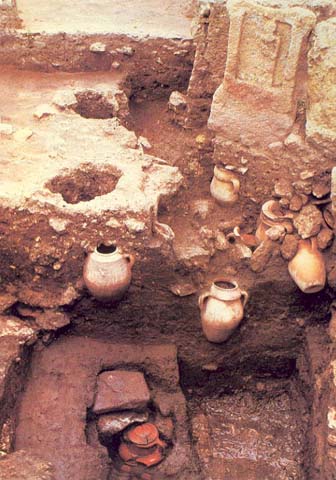Image Details

ASOR Punic Project/James Whitred
Layer upon layer of urns containing the cremated remains of children fill the huge Tophet in ancient Carthage. In the foreground, emerging from dark brown marsh clay, is a sealed red urn from the earliest phase of burials, Tanit I (750–600 B.C.). The remaining urns belong to the latter part of the middle phase, Tanit II (400–300 B.C.). The density of urns per meter is clearly much greater in the fourth century than in the earlier level. Child sacrifice did not decline then but in fact became more frequent.
In the upper left quarter of the photo are two holes dug by ancient Carthaginians, who then lowered the urns containing the bones and ashes of their children into the ground. The pits were often lined with stones and the urn burial then capped with stones; a monument like the one at right was then placed on top. Excavators have removed the monuments and cleared the burial pits. The large weathered sandstone monument (top right) shows Tanit holding a tambourine and standing in the sacred portal of a temple.
